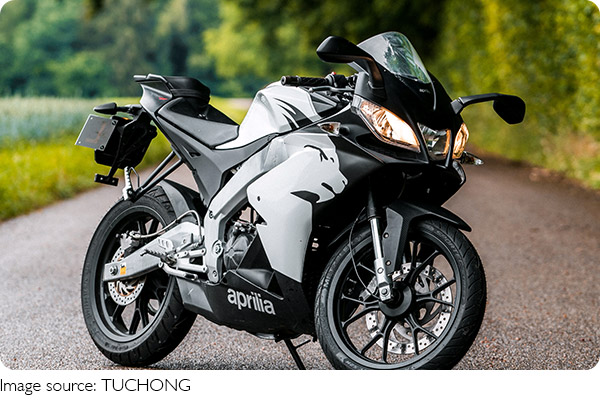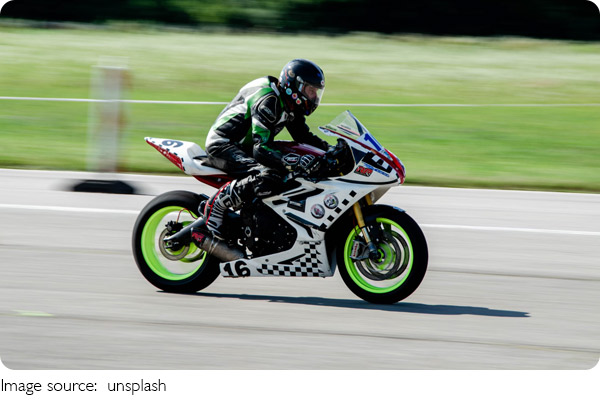Beginner Riding Tips

So, you've finally got your first motorcycle—exciting, right? But also a little scary? Don't worry, we've all been there. Riding a motorcycle is fun and freeing, but it also comes with real responsibilities.
That's why we're sharing the essential tips every beginner rider should know before hitting the road. These aren't just "good to know"—they're the habits that keep us safe and confident on two wheels.
Wear the Right Gear
First things first: safety. We should always wear proper riding gear, even if we're just going around the block.
• Helmet: A certified, full-face helmet protects our head and face.
• Jacket and pants: Choose ones made with abrasion-resistant material.
• Gloves: Protect our hands from injury and give better grip.
• Boots: Go for ankle-high shoes with solid soles for balance and protection.
Looking good is great—but being safe should always come first.
Get Comfortable with the Controls
Every bike has its own feel. Before riding, we should get to know the controls:
• Throttle and brake response
• Clutch lever pressure
• Turn signal switches
• Gear shifter position
Spend time in a quiet parking lot. Practice starting, stopping, shifting, and turning until these actions feel natural.
Master Smooth Starts and Stops
New riders often struggle with jerky starts or panic stops. We can avoid this by:
• Releasing the clutch slowly while giving steady throttle
• Braking gradually with both front and rear brakes
• Keeping both feet down when stopping to stay balanced
Avoid slamming the brakes or twisting the throttle too hard—it only increases the chance of losing control.
Always Look Where You Want to Go
It sounds simple, but it works like magic. Our motorcycle tends to follow our eyes. When we look through a corner instead of down at the ground, we steer more naturally.
This is especially helpful when:
• Making tight turns
• Avoiding obstacles
• Riding through curves
So, keep our heads up and eyes forward!
Use Both Brakes
Some new riders rely only on the rear brake, but we should learn to use both brakes together.
• The front brake provides about 70% of stopping power.
• The rear brake helps with stability.
With practice, we'll learn how to apply just the right pressure on each. Too much front brake can cause a skid, especially in wet conditions—so always brake smoothly.
Watch Out for Road Hazards
As riders, we're more exposed to dangers like:
• Potholes
• Loose gravel
• Oil spills
• Wet leaves
• Metal covers or railroad tracks
We need to scan the road ahead and react early. When possible, change lanes or slow down to avoid rough patches.
Practice Emergency Maneuvers
What if a car suddenly stops in front of us? We can't panic—we need to react fast. That's why it's a good idea to practice:
• Quick stops using both brakes
• Swerving to avoid obstacles
• Downshifting to control speed on hills
Doing these drills in a parking lot helps build the muscle memory we need during real emergencies.

Ride Like You're Invisible
It's harsh, but true—some drivers just don't see motorcycles. So let's stay extra alert:
• Avoid riding in blind spots
• Always signal early
• Use headlights, even during the day
• Keep a safe following distance
And most importantly, never assume a car will stop or yield. Defensive riding can save our lives.
Final Thoughts for New Riders
We all start somewhere, and it's okay to take things slow. Every ride teaches us something new. As we practice more, our confidence and skills will grow.
Lykkers—if you've just started riding, which part feels most exciting? And what's been your biggest challenge so far? Let's chat in the comments! We're all learning together, and the more we share, the safer and happier our rides will be.
-
 Brake System BasicsHow Do Motorcycle Brakes Really Work? Learn the System That Keeps Us Safe on the Road!
Brake System BasicsHow Do Motorcycle Brakes Really Work? Learn the System That Keeps Us Safe on the Road! -
 Routine Car ChecksNot Sure When to Check Your Car? Here's the Complete Maintenance Timeline Every Driver Needs!
Routine Car ChecksNot Sure When to Check Your Car? Here's the Complete Maintenance Timeline Every Driver Needs! -
 Unlock Used Car SecretsInsider tips to buy secondhand cars without costly surprises!
Unlock Used Car SecretsInsider tips to buy secondhand cars without costly surprises!